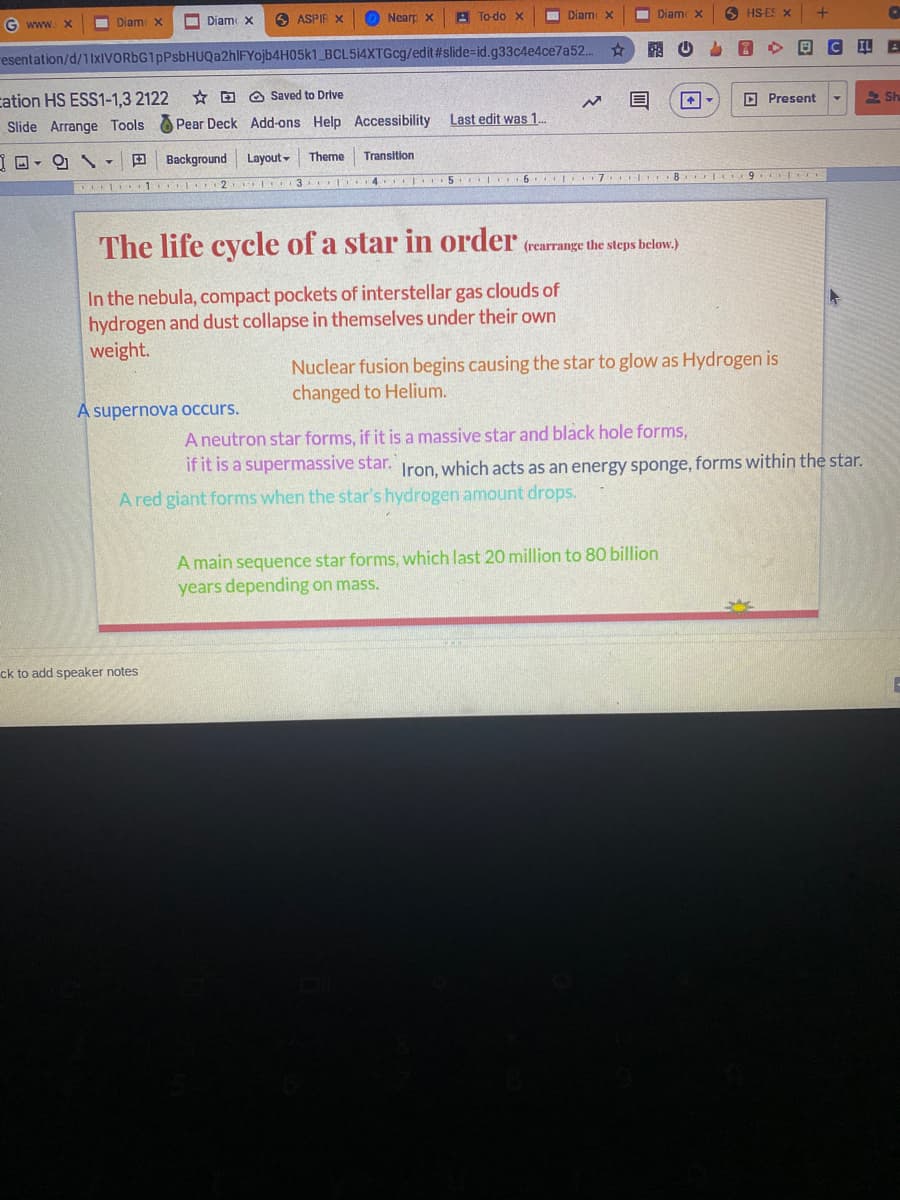The life cycle of a star in order (rearrange the steps below.) In the nebula, compact pockets of interstellar gas clouds of hydrogen and dust collapse in themselves under their own weight. Nuclear fusion begins causing the star to glow as Hydrogen is changed to Helium. A supernova occurs. A neutron star forms, if it is a massive star and black hole forms, if it is a supermassive star. Iron, which acts as an energy sponge, forms within the star. A red giant forms when the star's hydrogen amount drops. A main sequence star forms, which last 20 million to 80 billion years depending on mass.
The life cycle of a star in order (rearrange the steps below.) In the nebula, compact pockets of interstellar gas clouds of hydrogen and dust collapse in themselves under their own weight. Nuclear fusion begins causing the star to glow as Hydrogen is changed to Helium. A supernova occurs. A neutron star forms, if it is a massive star and black hole forms, if it is a supermassive star. Iron, which acts as an energy sponge, forms within the star. A red giant forms when the star's hydrogen amount drops. A main sequence star forms, which last 20 million to 80 billion years depending on mass.
Related questions
Question
100%
What order do they belong in?

Transcribed Image Text:O Diam x
O ASPIR X
O Nearp x
A To-do x
O Diam X
O Diam X
6 HS ES X
G www.
I Diam X
IL E
resentation/d/11xIVORbG1pPsbHUQa2hlFYojb4H05k1 BCL514XTGcg/edit#slide%=id.g33c4e4ce7a52.
cation HS ESS1-1,3 2122
* D O Saved to Drive
D Present
2 Sh
Slide Arrange Tools Pear Deck Add-ons Help Accessibility
Last edit was 1.
I D- O -
Background
Layout-
Theme
Transition
1 2 3 4 5 I 6 I 7 8 I9
The life cycle of a star in order rearrange the steps below.)
In the nebula, compact pockets of interstellar gas clouds of
hydrogen and dust collapse in themselves under their own
weight.
Nuclear fusion begins causing the star to glow as Hydrogen is
changed to Helium.
A supernova occurs.
A neutron star forms, if it is a massive star and black hole forms,
if it is a supermassive star.
Iron, which acts as an energy sponge, forms within the star.
A red giant forms when the star's hydrogen amount drops.
A main sequence star forms, which last 20 million to 80 billion
years depending on mass.
ck to add speaker notes
Expert Solution
This question has been solved!
Explore an expertly crafted, step-by-step solution for a thorough understanding of key concepts.
This is a popular solution!
Trending now
This is a popular solution!
Step by step
Solved in 2 steps
